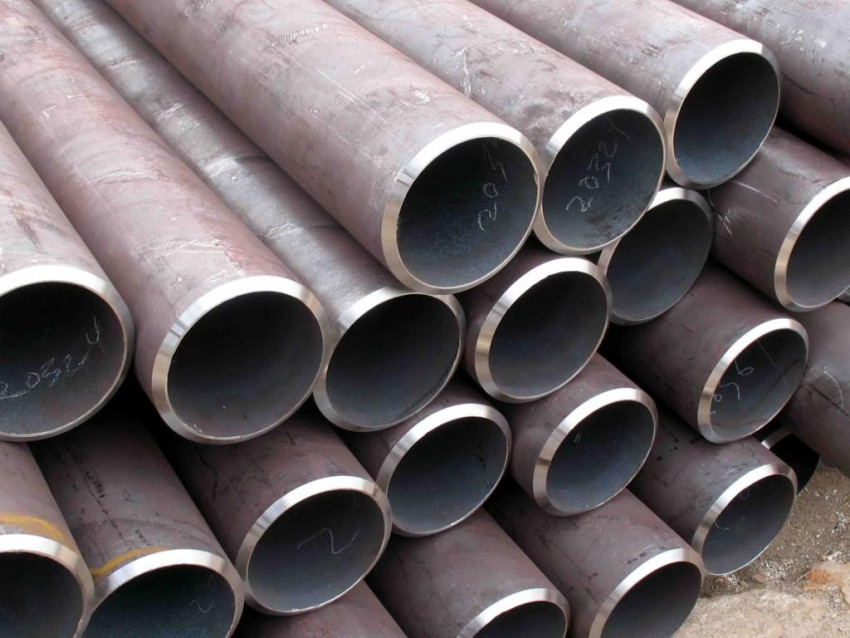
Traditional barrel roll (or Mann) piercers are widely used in the production of hot-rolled seamless steel pipes. But since the double-supported conical punching machine appeared in 1980, the conical punching machine has been developed more rapidly. Compared with the barrel roll puncher, the cone puncher has the following characteristics.
(1) The roll diameter of the tapered roll gradually increases from the inlet to the outlet, so that the peripheral speed of the roll gradually increases from the inlet to the outlet with the increase of the roll diameter, which is conducive to the axial deformation of the metal, and reduces the torsion and additional deformation of the capillary tube , has the effect of delaying the "cross-forging effect" (Mann's effect), which can improve the inner surface quality of the capillary. Therefore, it is more beneficial to perforated continuous casting billets and alloy steels.
(2) The axial speed of the outlet is high, and the perforation efficiency is high.
(3) The elongation coefficient is large, up to 6.
(4) The larger diameter expansion amount can reach 30%~40%.
(5) The weight and installed capacity of the equipment are relatively large, and the investment is relatively high.
The deformation process of barrel roll and cone roll punch is the same. The piercing machine is composed of a roll, a guide plate (guide plate) and a plug to form a deformed pass. The perforation deformation is divided into four stages: the biting segment (zone I), the perforation segment (zone II), the whole segment (zone III), and the circular segment (zone IV).
(l) Bite into segment (zone I)
The main function of the biting section is to realize the first biting of the tube blank, so as to prepare the tube blank for the second biting and perforation when the tube blank contacts the plug.
After the round tube blank is bitten, due to the tapered surface of the roll inlet cone, it is gradually compressed in diameter when it rotates and advances along the perforation direction (longitudinal direction). A part of the metal in the compressed part flows laterally, so that the cross-section of the billet changes from a circle to an ellipse, and a part of the metal (mainly the surface metal) extends longitudinally, forming a "bell mouth"-shaped depression on the front end of the billet. This recess and centering hole (if necessary) center the plug with the blank.
(2) Perforation section (Zone II)
The main function of the perforated section is to turn the solid blank into a hollow capillary tube, the length of which is from the nose of the plug to the cone of the plug.
The deformation characteristic of this section is that the distance between the surface of the roll and the surface of the plug gradually decreases, the capillary is rotated and advanced, and the wall thickness is compressed at the same time, which is a spiral continuous rolling process. Metal with reduced wall thickness can flow laterally (diameter expansion) and longitudinally (extend). However, the lateral flow deformation is limited by the guide plate, and the longitudinal extension deformation is the main one. Due to the active rotation of the guide plate, the longitudinal friction force of the metal is applied to strengthen the longitudinal extension of the metal, and the extension coefficient can reach more than 6.
(3) The whole section (zone III)
The main function of the equalizing section is to equalize the wall of the pipe and improve the dimensional accuracy of the wall thickness and the quality of the inner and outer surfaces. This length starts from the tip cone band and ends when the inner wall of the capillary leaves the tip. Since the head busbar and the roll busbar are approximately parallel, the wall thickness reduction is very small, which mainly plays the role of leveling. The capillary cross section is also oval in this section.
(4) Gauge circle segment (IV area)
The main function of the circle segment is to circle the oval capillary. This length begins when the inner wall of the capillary leaves the head and ends when the capillary leaves the roll. The deformation of this section is essentially the plastic bending deformation of the headless hollow capillary, and the roll gradually reduces the reduction on the diameter of the capillary until it reaches 0.


